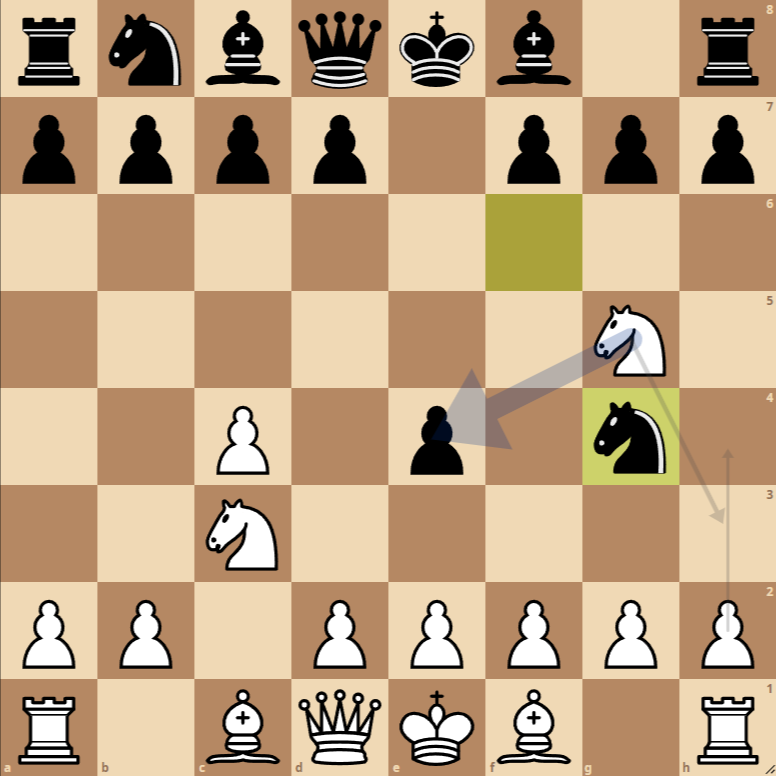How to Play the English Opening: Erbenheimer Gambit
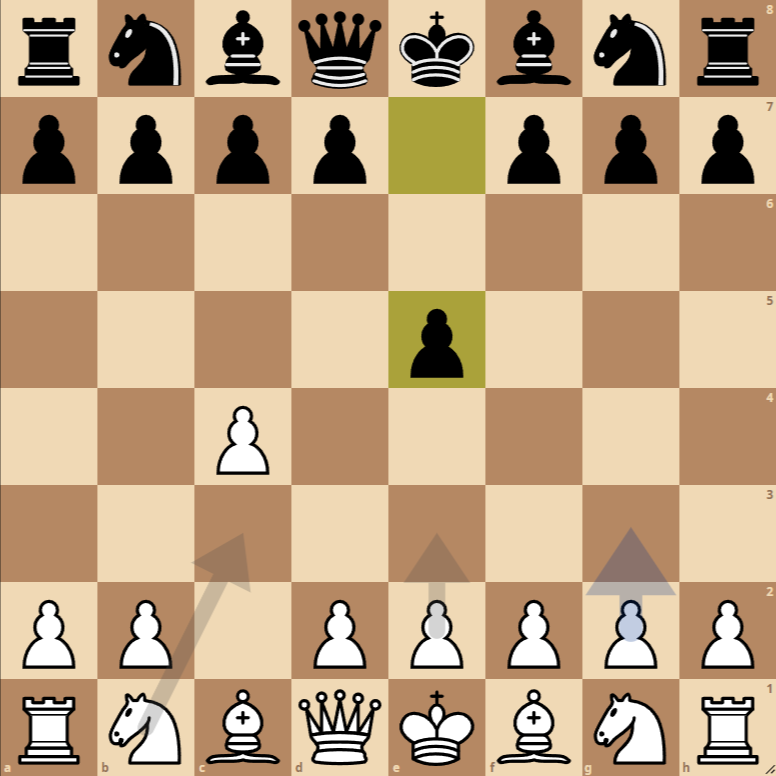
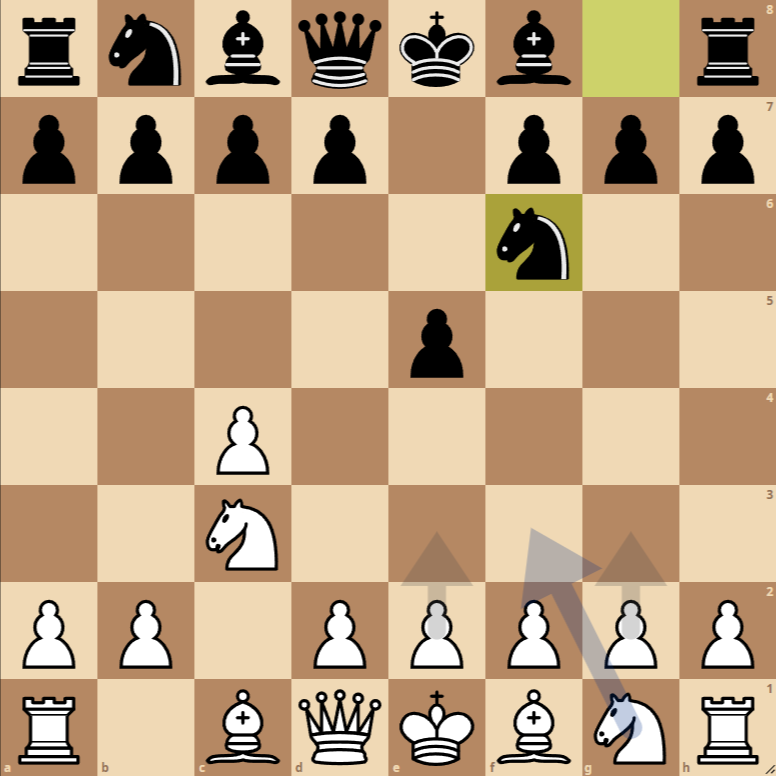
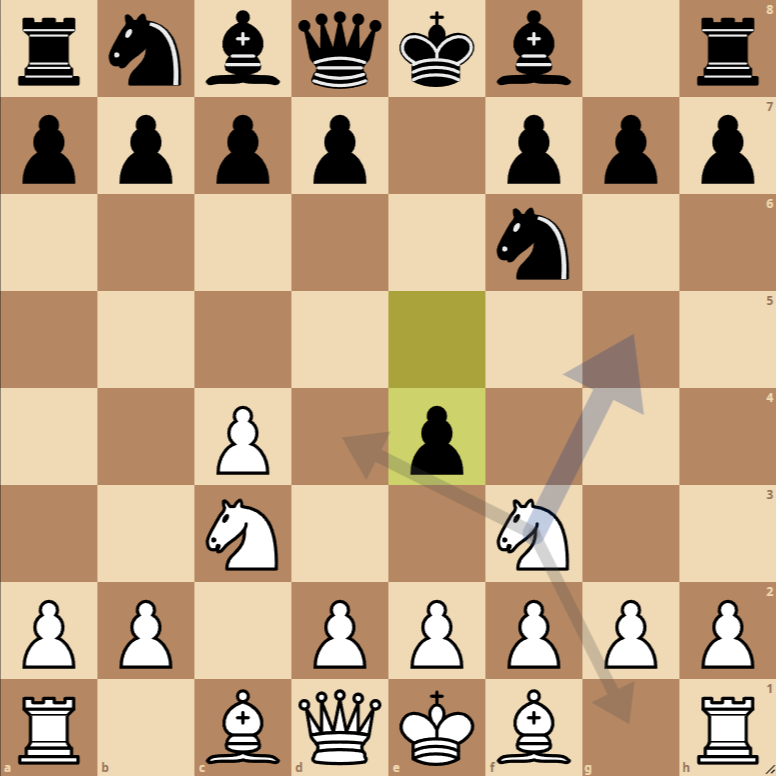
- 1. c4 e5: White starts with the advance of the queen’s pawn, aiming to control the center and prepare smooth piece development. Black responds symmetrically, targeting the center and preparing the development of their minor pieces.
- 2. Nc3 Nf6: White’s knight is positioned to control the center and support the pawn’s advance. Black develops their knight to f6, a classic move to control the center and prepare for castling.
- 3. Nf3 e4: White continues to develop their pieces by placing another knight to influence the center. Black advances their pawn from e5 to e4, challenging White’s central pawn structure and seeking space in the center.
- 4. Ng5 Ng4: White’s knight moves to g5, threatening the pawn on e4 and increasing pressure in the center. Black’s knight responds to g4, creating dynamic tension in the center and on White’s kingside.
Variations of the English Opening: Erbenheimer Gambit
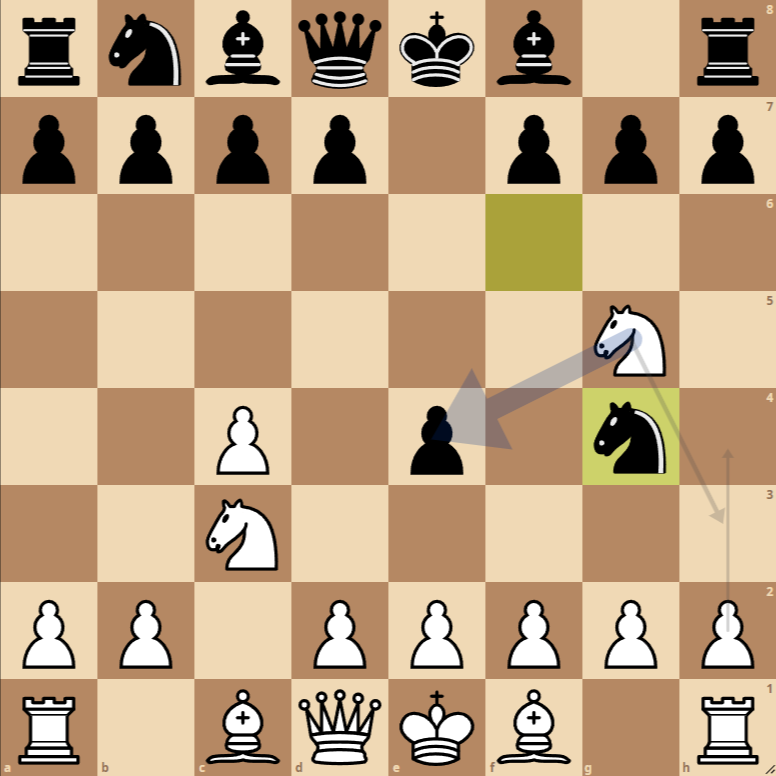
Variation 1: 4…h6
This variation involves Black advancing the pawn to h6, challenging the knight on g5. White can choose to retreat the knight or sacrifice it for an initiative on the kingside.
Variation 2: 4…d5
With d5, Black aims to open the center and free their dark-squared bishop. This move also challenges White’s pawn structure and opens lines for rooks and the queen.
Variation 3: 4…Be7
This move prepares Black’s kingside castling and provides support to the pawn on e4. The bishop on e7 also creates a backstop for the pawn on d5 in case of future advances in the center.
English Opening: Erbenheimer Gambit – Strategic and Tactical Analysis
The English Opening, characterized by the initial move 1.c4, leads to a flexible and asymmetrical setup. In the variation we are analyzing, known as the Erbenheimer Gambit, White aims to disrupt the center from the start. The move sequence is as follows:
- 1.c4 e5
- 2.Nc3 Nf6
- 3.Nf3 e4
- 4.Ng5 Ng4
Current Position
White has deployed both knights to control the center and has advanced the queen’s pawn, creating asymmetrical tensions. The move 4.Ng5 is provocative, aiming to exploit the tension in the center and exert pressure on the e4 pawn.
Black, on the other hand, has responded with a solid pawn structure in the center, with e5 and e4, and has developed their kingside knight to f6, before aggressively advancing their other knight to g4, threatening the knight on g5.
Strategies and Tactics
For White:
- Control of the Center: Despite Black’s advances, it’s essential not to completely concede the center. Consider moves that challenge Black’s pawn structure.
- Piece Development: Continue with harmonious piece development, possibly moving the light-squared bishop and castling.
- Pressure on e4: Black’s advanced pawn on e4 is a tactical target. Moves like d3 could be considered to undermine this pawn.
For Black:
- Central Control: It’s crucial for Black to maintain their strong presence in the center. The pawn on e4 is a valuable asset.
- Piece Development and King Safety: Black should aim to develop their remaining pieces, especially the dark-squared bishop, and consider king safety, possibly through castling.
- Active Counterplay: The knight on g4 can look for tactical opportunities, possibly targeting sensitive points in White’s position.
Next Best Moves
For White (#LCF): The move h3 is an option, forcing the Black knight to decide whether to retreat or capture on f3. Another possibility is d3, directly challenging the pawn on e4.
For Black (#LCF): Black could consider d5, aiming to further open the center and challenge White’s pawn structure. Also, Be7 preparing castling is a solid move.
Conclusion

